 Stroudwater Navigation Pike Lock to Ocean
Stroudwater Navigation Pike Lock to Ocean Stroudwater Navigation Pike Lock to Ocean
Stroudwater Navigation Pike Lock to Ocean
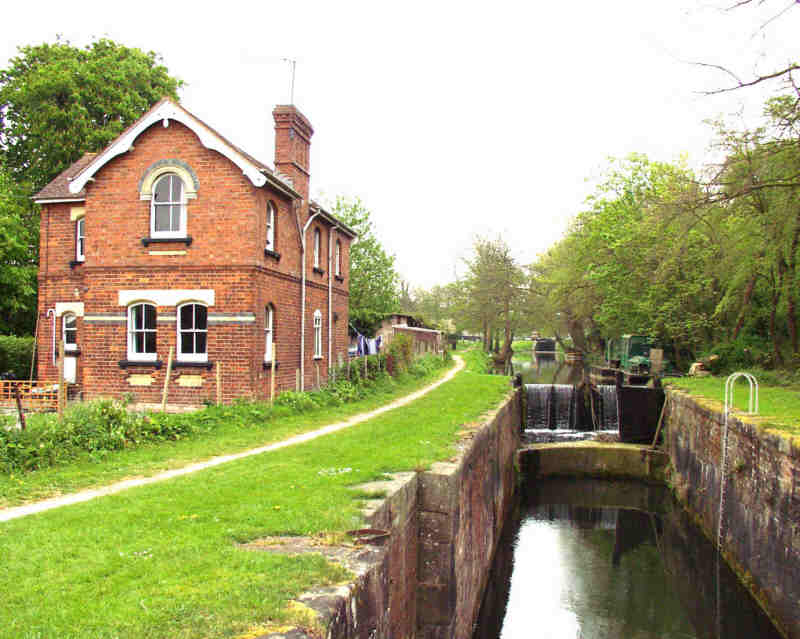 |
Pike Lock is the middle lock
of the
Eastington Flight. It is waiting
for a replacement bridge and regating. The Pike Lock House is only half
the age of the canal itself, having been commissioned by the Company
around
1880 on land which was formerly occupied by a toll house for the
turnpike
road (from which the lock derives its name). The slipway was built by the Cotswold Canals Trust just prior to a visit by HRH Prince Charles in April 1992. Although principally built of concrete, it is finished off with blue bricks which once formed part of a loading bay for offloading stone from boats into carts. The current stop plank across the slipway is very heavy and should be moved with care, please make contact with SVCC if anticipating a launch. When using the slipway, it is important that the stop plank at its head is replaced after use - this is a short pound and the plank is a precaution against flooding in the event that excessive water comes down the flight. |
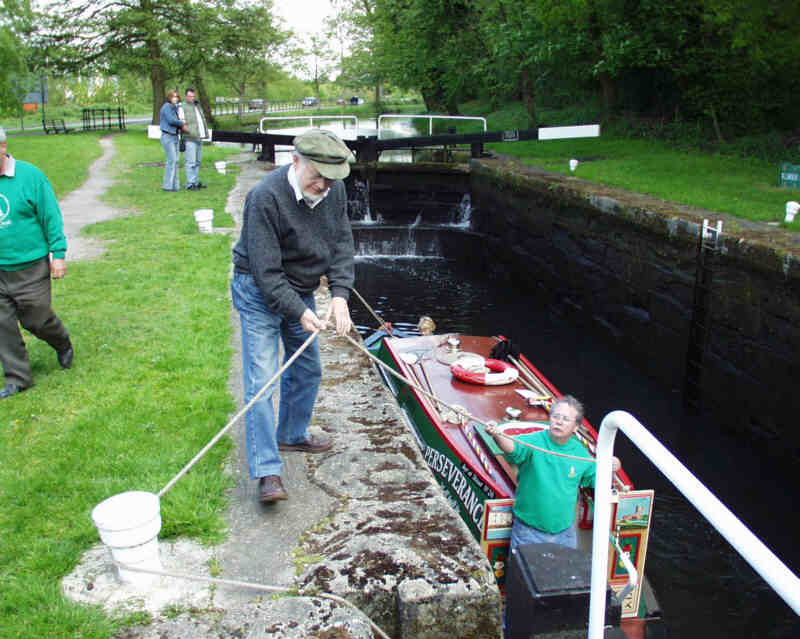 |
Blunder
Lock is different to all the other locks on the flight in that it it
built of stone. Its name derives from an incident during the canal's
construction when the company engineer caused the original lock to be
built at the wrong level having been previously been given notice to
quit by
the company. Please leave all gates and paddles
closed when you have finished with the locks. The canal heads off towards Newtown Lock with a wood on the offside and the road on the towpath side. In the 1970s, it was planned to build this road over the canal and this would have resulted in a long length of canal and historical structures being obliterated - fortunately the canal enthusiasts started work on the restoration here and were therefore able to turn public opinion in their favour and stop this from happening. |
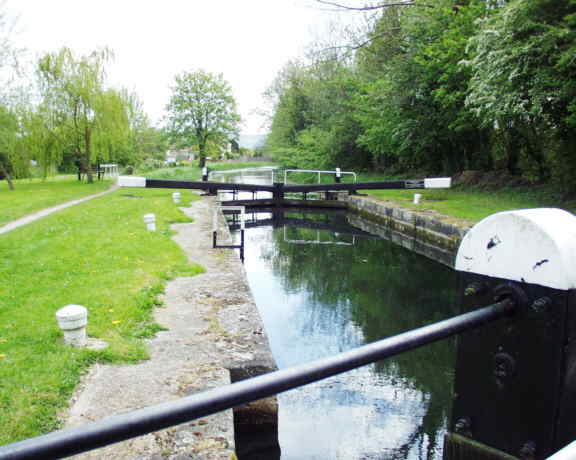 |
Newtown
Lock was the first to be fully restored to full working order
on the whole Thames - Severn link. There can sometimes be an
accumulation
of floating weed at the head of the lock. Like Pike and Blunder Locks,
Newtown has a good overspill weir which takes excessive water from
above the lock and discharges below the tail of the lock. The hamlet of Newtown was built by the canal company at the time of the construction of the canal and several of the buildings were, at one time or another, public houses. Similarities of architectural style can be observed with several of the buildings and others up and down the canal. |
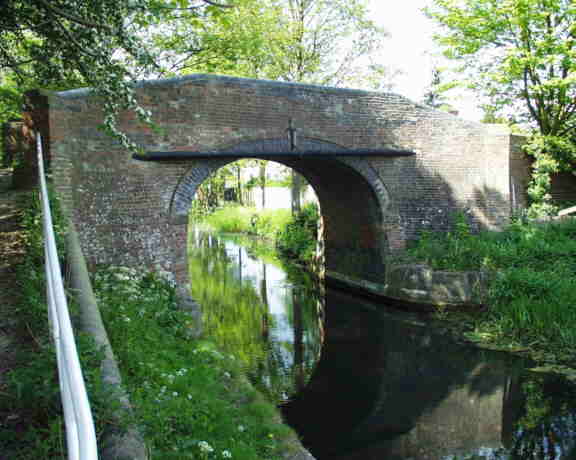 |
Beyond Newtown, the canal passes under Newtown Roving Bridge where the towpath moves from the north bank to the south. Views of the Cotswold hills open up here. |
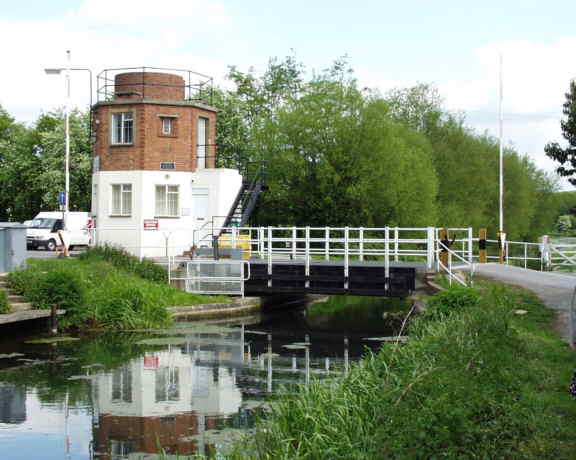 |
At the end of this stretch is
Bonds Mill Bridge. This used to be a
swing bridge and is the only access to Bonds Mill which is now an
industrial estate. The swing bridge had been fixed and additional
girders put across the canal and its swinging area had become
obstructed. The original intention had been to install a bascule
style lift bridge but a novel approach was subsequently adopted in the
use of a light weight plastic structure capable of being lifted without
a counterbalance. This resulted in a structure more in keeping with the
original but capable of carrying modern day traffic weights. There are problems with the bridge and
it will not be possible
to lift it until it has been replaced as part of the Phase 1B project . Headroom under the bridge is very limited
and
portaging may be necessary. The canal beyond Bonds Mill Bridge is on an embankment on the side of the hill. The first bit was narrowed following a series of collapses due to poor reinstatement work after a pipeline was built under the canal bed nearby causing the canal to overtop here. |
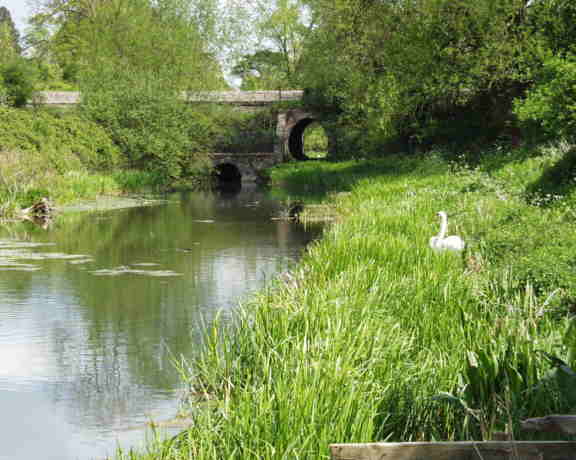 |
As the railway is approached,
a narrow point in the canal marks the
site of a former dam which was installed to safeguard a water supply to
a nearby factory. A section of the dam has been removed and most 7 ft
beam craft should be able to pass through with care, siltation
permitting. Only a short length remains before the site of Ocean Railway Bridge is reached. Since this picture was taken, a new full sized bridge has been built to enable boats to get under the railway. Ocean Railway Bridge marks the boundary between Phase 1B of the restoration project (G&S Canal to here) and Phase 1A which runs from the Ocean though to Brimscombe. |